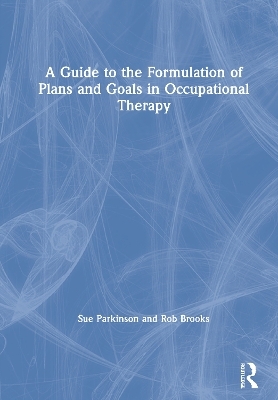
A Guide to the Formulation of Plans and Goals in Occupational Therapy
Routledge (Verlag)
978-0-367-49471-1 (ISBN)
Section 1 introduces the concept of formulation – where it comes from, what it involves, why it is important, and how assessment information can be guided by theoretical frameworks and organised into a flowing narrative. Section 2 provides specific instructions for constructing occupational formulations using the Model of Human Occupation. In addition, a radically new way for creating aspirational goals is introduced - based on a simple acronym - which will enable occupational therapists to measure sustained changes rather than single actions. Section 3 presents 20 example occupational formulations and goals, from a wide range of mental health, physical health and learning disability settings, as well as a prison service, and services for homeless people and asylum seekers.
Designed for practising occupational therapists and occupational students, this is an essential introduction for all those who are looking for an effective way to formulate plans and goals based on the Model of Human Occupation.
Sue Parkinson practised as an occupational therapist for many years. Sue is the lead author of the Model of Human Occupation Screening Tool (MOHOST) and author of an occupational intervention programme called Recovery through Activity. She works as a freelance trainer providing an online advisory and supervision service. Rob Brooks is the Course Director for Occupational Therapy at Leeds Beckett University. His clinical practice, teaching, and research have focused on enabling occupational participation for children, young people, and their families.
Section 1:Understanding the Concept of a Formulation 1.Where does the idea of formualtion come from? 2.What is a formulation? 3.Why Create a Formulation? 4.How are formulations compiled? Part 2:Constructing Occupational Formulations and Goals 5.Structuring the Occupational Identity 6.Structuring the Occupational Competence section 7.Determining the key issues for Occupational Adaptaion. 8.Wrapping up the Formulation 9.Negotiating measurable occupational goals Part 3:Example Occupational Formulations and Goals I.Paediatric Service II.Children's Mental Health Service III.Adolescent Mental Health Service. IV.Perinatal Mental Health Service V.Acute Mental Health Service VI.Primary Care Service VII.Community Mental Health Service VIII.Mental Health Rehabilitation Service IX.Secure Mental Health Service X.Prison Service XI.Serivce for Homeless People XII.Traumatic Stress Service XIII.Independent Vocational Service XI.Acute Physical Service XV.Community Reablement Service XVI.Adult Social Care Service XVII.Intermediate Care Service XVIII.Care Home Liason Service XIX.Learning Disability Day Service XX.Community Learning Disability Service
| Erscheinungsdatum | 16.01.2021 |
|---|---|
| Zusatzinfo | 53 Tables, black and white; 17 Line drawings, black and white; 17 Illustrations, black and white |
| Verlagsort | London |
| Sprache | englisch |
| Maße | 174 x 246 mm |
| Gewicht | 340 g |
| Themenwelt | Sachbuch/Ratgeber ► Gesundheit / Leben / Psychologie |
| Medizin / Pharmazie ► Allgemeines / Lexika | |
| Medizin / Pharmazie ► Medizinische Fachgebiete ► Psychiatrie / Psychotherapie | |
| Medizin / Pharmazie ► Physiotherapie / Ergotherapie ► Ergotherapie | |
| ISBN-10 | 0-367-49471-X / 036749471X |
| ISBN-13 | 978-0-367-49471-1 / 9780367494711 |
| Zustand | Neuware |
| Haben Sie eine Frage zum Produkt? |
aus dem Bereich


